 Click here to learn about and purchase Bare-Metal® Foil Click here to learn about and purchase Bare-Metal® Foil
 Click here to read about and purchase the Bare-Metal® Panel Scriber Click here to read about and purchase the Bare-Metal® Panel Scriber
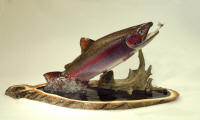 New 9 hour DVD series New 9 hour DVD series
"Creating an Artificial Water Splash"
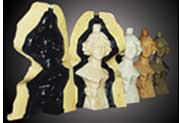 Click here for Polytek® Mold Making Rubber Compounds Click here for Polytek® Mold Making Rubber Compounds
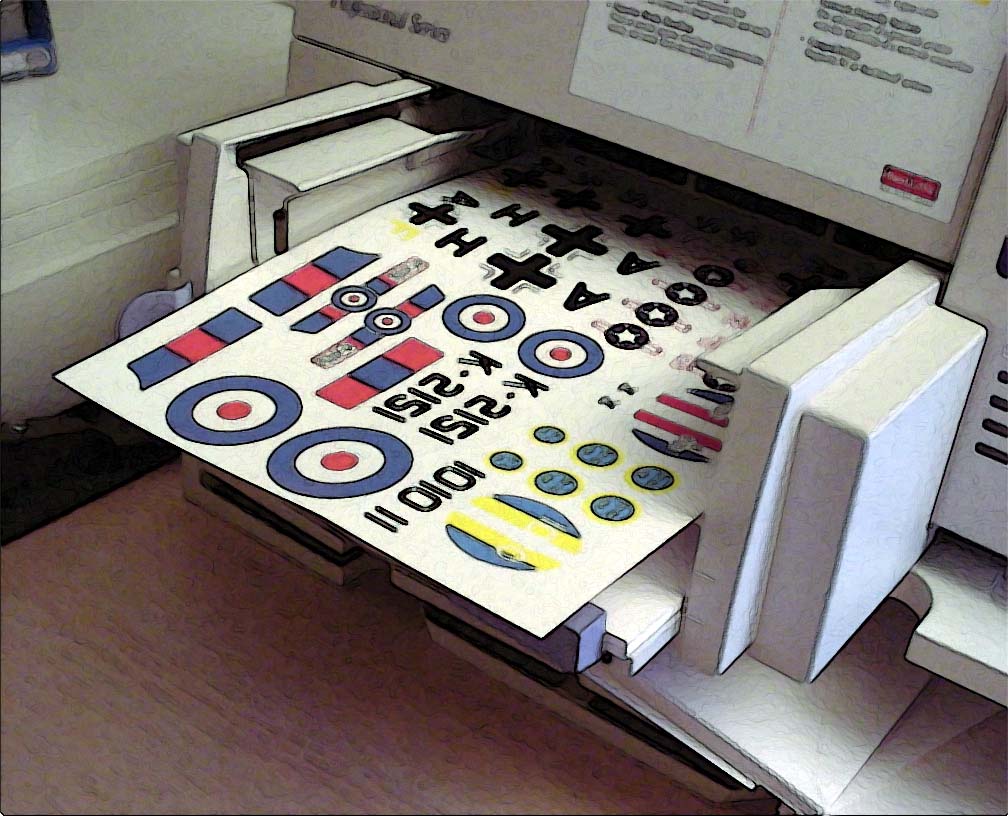 Click here to purchase Click here to purchase
Experts-Choice® Decal Film
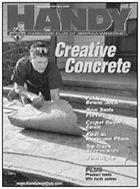 Click here to read about making concrete stamps using Polytek® 75-80 Polyurethane Rubber Click here to read about making concrete stamps using Polytek® 75-80 Polyurethane Rubber
|
“Trinity Root”: Tobin’s Latest Earth Bronze
A Memorial for All Time Made Using Polytek Mold Rubber & Plastic
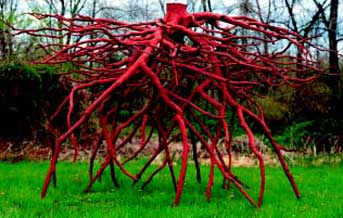
One of Steve Tobin’s “Earth Bronze Root Sculptures” gives a glimpse of what the 18-foot-high “Trinity Root” bronze will look like when completed and dedicated on Sept. 11 this year.
As you read this article, Steve Tobin and his team of artists, sculptors, and restoration specialists in Quakertown, PA, are carefully working to memorialize and preserve forever the natural remnants of the now famous “Trinity Tree Root,” which was once located in front of St. Paul’s Chapel of the Parish of Trinity Church on Wall Street adjacent to Ground Zero in New York City.
As debris rained down around the church on Sept. 11, 2001, an enormous sycamore tree shielded the church building from catastrophic damage. In the weeks that followed. St. Paul’s became a hospice—a place of worship and a place of rest for those who worked tirelessly at the epicenter of the tragedy. Volunteers, counselors, and healthcare professionals transformed Trinity Church into the central meeting place where workers ate, slept, wept, and were renewed as they poured time and effort into search and cleanup operations.
Eventually, St. Paul’s sycamore tree succumbed to the extensive damage from falling debris and was cut down. Its roots and stump remained at St. Paul’s until
Tobin’s crew was commissioned to excavate
and reproduce the root in bronze.
The finished bronze will be installed in
downtown Manhattan across from the
well-known bronze Wall Street Bull.
Tobin is uniquely qualified for this task. He has completed several “Earth
Bronzes,” including root sculptures measuring
up to 15 feet high and 25 feet in
diameter. Tobin’s Root Sculpture and
other Earth Bronzes have been recently
exhibited at the American Museum of
Natural History in New York City.
To create the bronze casting through the lost wax process, Steve and his crew
first needed to make numerous flexible
rubber molds to capture the intricate
shapes and detail of the stump and all the
root structure. Having worked with many
Polytek® mold rubber and plastic products
over the years, Steve turned again to
Polytek® for mold-making advice and
material selection. Because of the intense
undercuts and fragile root structure,
Tobin’s moldmakers chose to use Poly
74-20, a 1A:2B, soft Shore A~20 liquid
polyurethane mold rubber with high elongation
(stretch) and tear strength.
A major criterion for this project was
to leave the original stump and root ball
intact for preservation after the molding
process. To accommodate this parameter,
Tobin’s crew carefully sealed the porous
wood using Polytek®’s clear polyvinyl
alcohol (PVA) sealer. Since PVA is water
soluble, the sealer could be easily
washed away once the mold-making
phase was completed.
Because of the root system’s size and
complexity, Tobin decided to brush the mold rubber onto the original root structure.
To make a brushed mold, new Poly
Fiber II thickener was added to the mixed
rubber to whatever level was desired.
Since the first coat of rubber needed to
pick up all the surface detail without trapping
bubbles, it couldn’t be too thixotropic,
so only a little Poly Fiber II was used.
More fiber was added in the subsequent
coats to allow for faster thickness build.
In most cases, three coats of Poly 74-20
thickened with Poly Fiber were used to
make the completed blanket molds that
were about 3⁄8-inch thick. Each blanket
mold section was allowed to cure overnight;
then a thin coat of Butcher’s Wax
was brushed on, allowed to dry (approximately
10 minutes), and top-coated with
a light coat of Pol-Ease® 2300 Release
Agent to ensure that the plastic mother mold/shell would separate easily from the
74-20 rubber mold. Since the blanket
molds were thin, rigid mother mold/shell
sections were made of Poly 1512X mixed
with Poly Fiber over the various blanket
mold sections to keep them in their original
shapes during the wax casting.
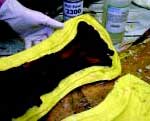 Poly 74-20 captures all the detail and releases
beautifully from Tobin’s original root
sections. Poly 74-20 captures all the detail and releases
beautifully from Tobin’s original root
sections.
|
Dozens of molds have been made, but
work continues. These molds consist of
large sections of the stump as well as
smaller ones of the finest root structure.
Wax castings pulled from these Poly
74-20 rubber molds will be submerged
in a refractory slurry which upon heating
will allow the refractory material to fuse
together, resulting in a mold that can withstand
the high temperature of molten
bronze. During this heating step, the wax will be melted and removed from this
new refractory mold (hence the term “lost
wax process”), leaving a cavity in which
to pour the bronze.
As many Polytek® art foundry customers
know, this is a very painstaking and
laborious process, and it all starts with
using a high-quality mold rubber that will
capture all the detail of the original, allow
numerous wax castings, if needed,
and last indefinitely when stored. Since
polyurethane rubbers are cost-effective
and easy to use, offer high performance
(excellent tear and elongation), release
wax castings easily, and come in systems
that can be poured, brushed, or sprayed,
they are the moldmaker’s first choice in
liquid rubbers. Once the mold is made,
the storage life (shelf life or library life)
of polyurethanes like the Poly 74-Series
(pourable or brushable) and Polygel rubbers
(brushable or sprayable) is unmatched.
When stored properly, they can
be expected to last indefinitely. (So far,
we have 20 years of data and are going
strong!)
More information on the Trinity Root
and the work performed by the Tobin Studio
will be available soon. CNN, National
Geographic, and other media organizations
are preparing programs to document
Tobin’s progress and the planned dedication
of the bronze sculpture to Trinity
Church on Sept. 11, 2005. Thanks, Steve,
for choosing Polytek® to participate in a
project of such profound significance.
Special thanks to Polytek for providing this content. Copyright © 2005, Polytek Development Corp. All Rights Reserved.
. |









 Poly 74-20 captures all the detail and releases
beautifully from Tobin’s original root
sections.
Poly 74-20 captures all the detail and releases
beautifully from Tobin’s original root
sections.